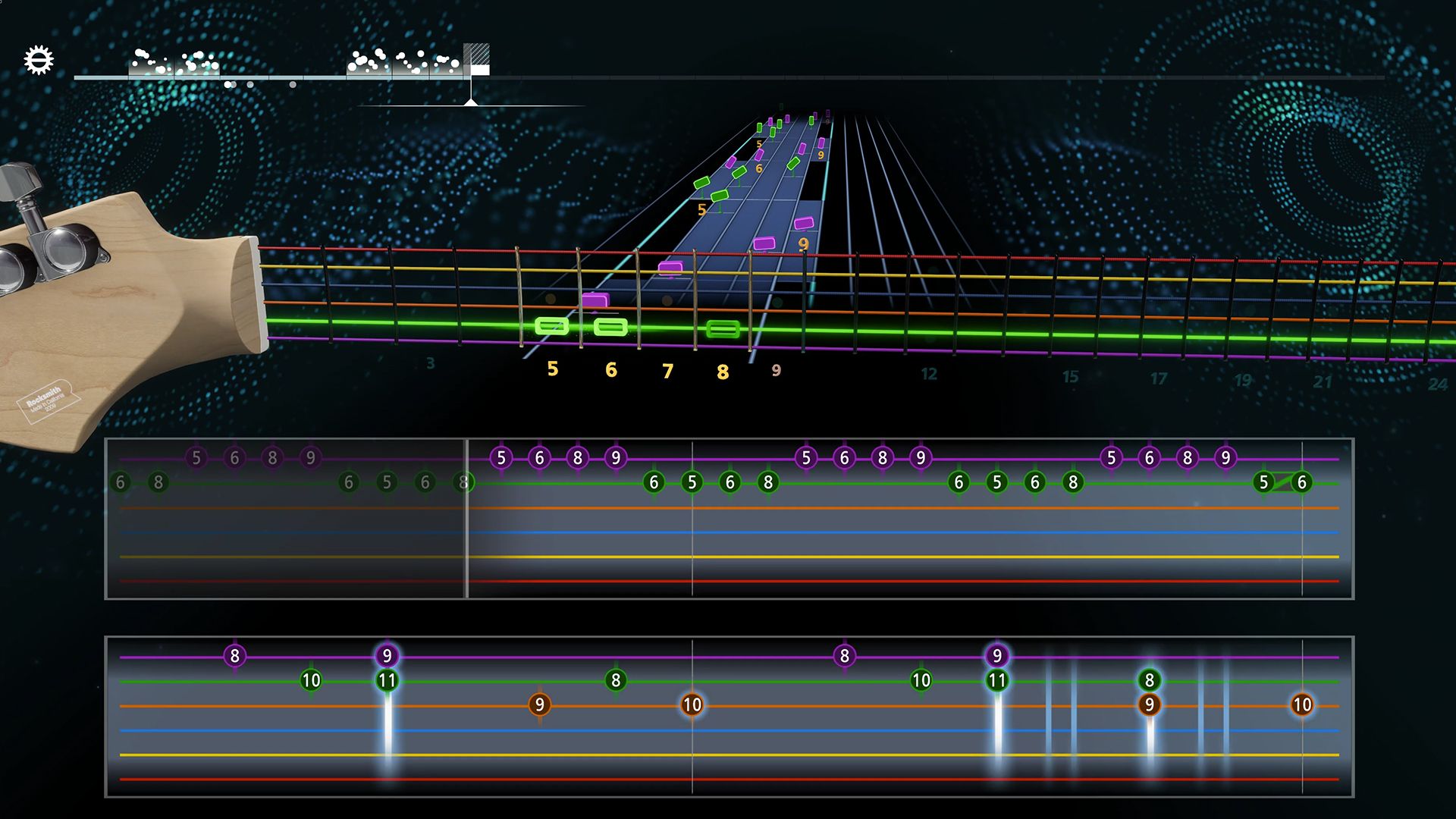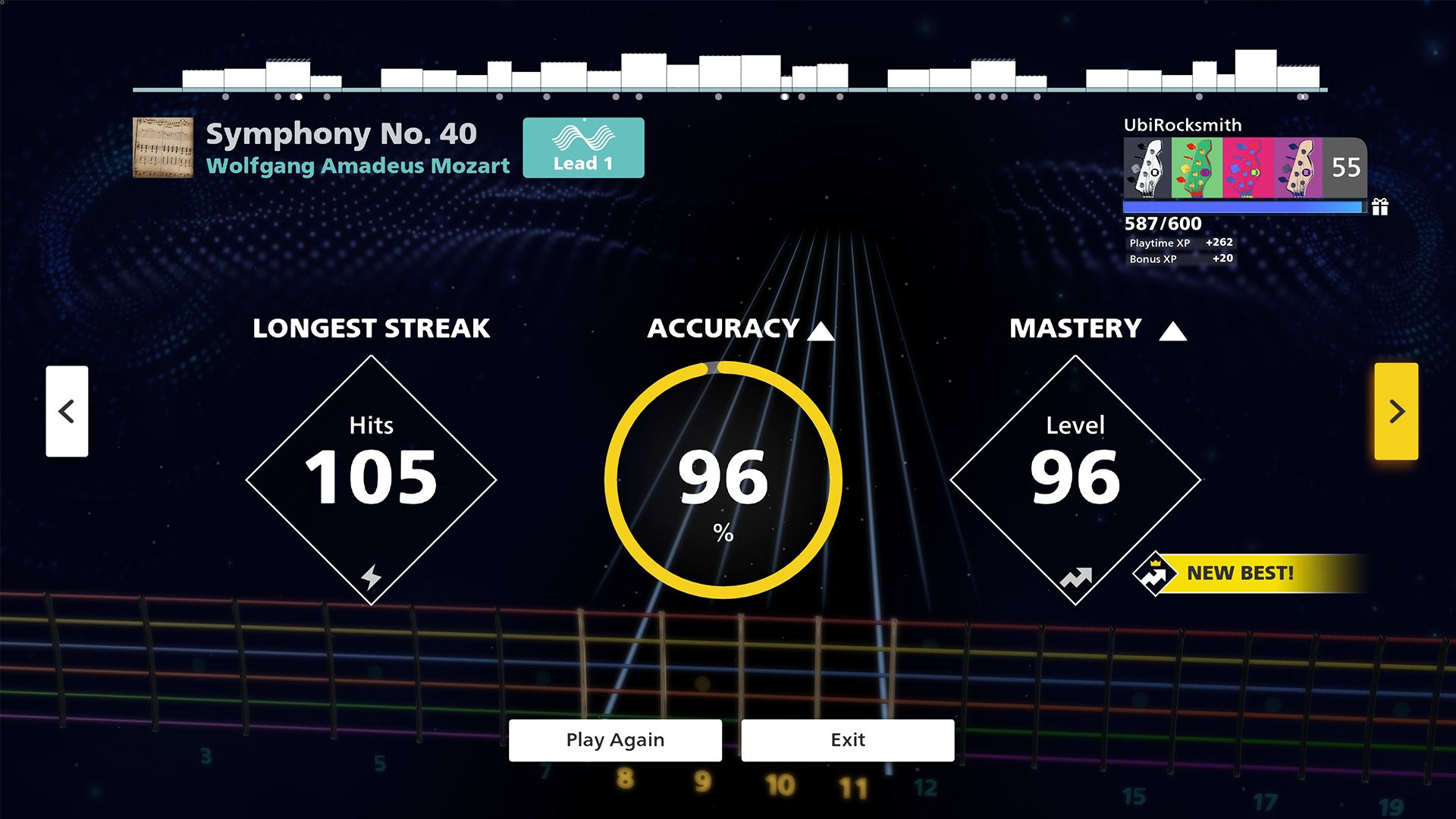
There were two types of people back in 2007: those who could play Guitar Hero 3’s Through the Fire and Flames on Expert and those who couldn’t.
Those who could shred their way through Dragonforce’s power metal obstacle course became part of an exclusive club, one that offered bragging rights and kudos among gamers and non-gamers alike. These were true guitar heroes who never deigned to pluck a single string.
Guitar Hero made you feel like a true axe god – even if Dragonforce was, in reality, a bit out of your league. Tapping your plastic Gibson SG’s colored fret buttons in time to rock and metal classics could light a fire in your belly – an exciting, tickly sense that maybe, just maybe, your newfound prowess in Harmonix’s hit video game meant that you could pick up an actual guitar and become a bonafide master. But, if you’re like me, you never gave that dream oxygen. Instead, you told yourself that learning real guitar was “too difficult”, and accepted that all you really wanted to do was play the role, not live it – like some sort of musician tourist.
15 years have passed since. And despite several half-hearted attempts, I’ve still never learned to play guitar. Finally though, after a couple of weeks with Rocksmith+ and the loss of feeling in one of my fingertips, I could really be on my way.
A long way to the top (if you wanna rock ‘n’ roll)

Back in 2011, in a likely attempt to bridge the gap between Guitar Hero fans and those who actually wanted to learn guitar, Ubisoft released Rocksmith. An “authentic guitar game”, Rocksmith (and its following 2014 edition) gamified guitar in the same way its Harmonix inspiration did. The difference? You used a real instrument and actually played the songs. No posing.
But while Rocksmith was still very much a game, its successor Rocksmith+ is more like an education tool. It requires a real guitar or bass and, rather than an upfront fee, a subscription of either $14.99 / £12.99 / AU$19.95 a month, $39.99 / £34.99 / AU$54.95 over three months, or $99.99 / £84.99 / AU$139.95 a year. The total may make your eyes water in a cost-of-living crisis, but it’s actually pretty decent when you consider guitar teachers can cost between $40 and $60 per hour. For Ubi’s fee, you get access to an abundance of content: educational videos to absorb, exercises to try out, and over 7,000 songs to learn that span a range of genres and experience levels.
However, it is worth noting that to play electric guitar or bass, you do require an amp for the mobile app input to register the sound properly. Or, as I highly recommend, the Rocksmith Real Tone Cable (price to be confirmed) which allows you to directly plug your electric instrument into your PC or laptop. Don’t do what I did, and try to play without either an amp or the cable: it just doesn’t work.
Sign up for breaking news, reviews, opinion, top tech deals, and more.
Hit a bum note? It’ll tell you. You can even practice the riff over and over until you get it right, controlling the speed and difficulty
You may be thinking, as I admittedly was: “Why pay for an education service that you can get pretty much for free on YouTube?” But the value of the real-time feedback Rocksmith+ provides can’t be overstated: it’s like having a guitar teacher on hand. Hit a bum note? It’ll tell you. You can even practice the riff over and over until you get it right, controlling the speed and difficulty to your liking.
While my guitar gently screeches

For a guitar amateur and visual learner like myself, Rocksmith+ became almost addictive. Each night for a week, I sat down telling myself I would spend just an hour practicing – only to keep saying “just one more song” as the evening rolled by. I played so much that I currently have no feeling in my left index finger – though my boyfriend assures me that’s “normal”, and that my hands will become calloused if I continue. I haven’t been able to shake the mental image of a blistered Joan Jett ever since. When I watch female guitarists on TV, I now ask whether they too had to trim off their fingernails in the pursuit of an A chord (something I’m not sure I’ll forgive Ubisoft for). Guitar Hero never prepared me for the real hardships of guitar playing.
I played so much that I currently have no feeling in my left index finger
But actually, the sense of pride I feel after only a couple of weeks with Rocksmith+ makes these seriously first-world problems worth it. As I surfed the noteway of Frank Black and The Catholic’s cover of Where is My Mind (read: played fretted notes to the rhythm), I got that same feeling Guitar Hero gave me: I was a rockstar. In reality, it sounded more like I was using my Ibanez as a weapon. On a mission to assault the ears of my neighbors.
As time went on, though, I did find the deafening screeching reduced. I can now play a basic version of the riff from Bill Withers’ Ain’t No Sunshine. Though the likes of Metallica, Paul Gilbert, and Ozzy remain very much out of my reach.
While I embarked on this education, my curious yet cynical partner (imagine a hairy Hanson brother) cast a watchful eye over my new teacher. A seasoned guitarist, he wasn’t quite sure what to make of Rocksmith+’s teaching style. The premise of it, generally, didn’t appeal to him as someone who isn’t a big gamer. After years spent in guitar lessons as a teenager, then honing his craft on the sticky stages of dark bars, the idea of turning the art of guitar into a game was foreign and too “scripted” – and I understand why. “It’s a great idea for someone who is brand new to guitar,” he tells me, “but not really for someone who knows their way around one.”
I wouldn’t entirely agree, however. Rocksmith+ may not necessarily be useful for seasoned players who want to improve in their specific style – but it certainly seems to offer a means of spreading your wings into other genres.
Hot for teacher

While it can’t carry a conversation about Steve Vai or Dream Theater, Rocksmith+ is the first guitar teacher to get me genuinely excited about learning to play. Its gamified structure may not be for everyone, and progression largely depends on your own motivation to practice, but it does promise an exciting way to get to grips with the instrument.
Back in 2007, I never truly appreciated the intricacies of the music I was ‘strumming’ along to. I didn’t understand that doing a power pose while playing along to Alice Cooper is actually really difficult when you’re busy simply trying to get the chords right. I’ve grown up though, as have guitar games.
If Guitar Hero was a sweaty, Jack Daniel’s-fuelled teen in a garage band, Rocksmith+ is what it became: a responsible, gin-sipping adult playing weddings at the weekend.
An award-winning games journalist, with seven years of experience in games journalism and a degree in journalism from City University, London, Vic brings experience from IGN, Eurogamer, The Telegraph, VG247, Dot Esports and more to the TechRadar table. You may have even heard her on the radio or speaking on a panel, as she’s previously appeared on BBC Radio 4, BBC Radio 5, BBC Radio Ulster and more. Not only is Vic passionate about games, but she's appeared on both panels and podcasts to discuss mental health awareness. Make sure to follow her on Twitter for more.